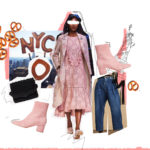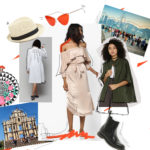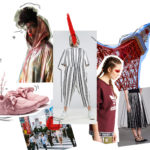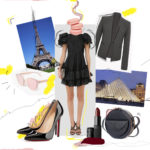- January 7, 2019
- FASHION + SHOPPING, FOOD + CULTURE
Who Are The Fashion Police And Why Do We Listen To Them?
Yay or Nay?
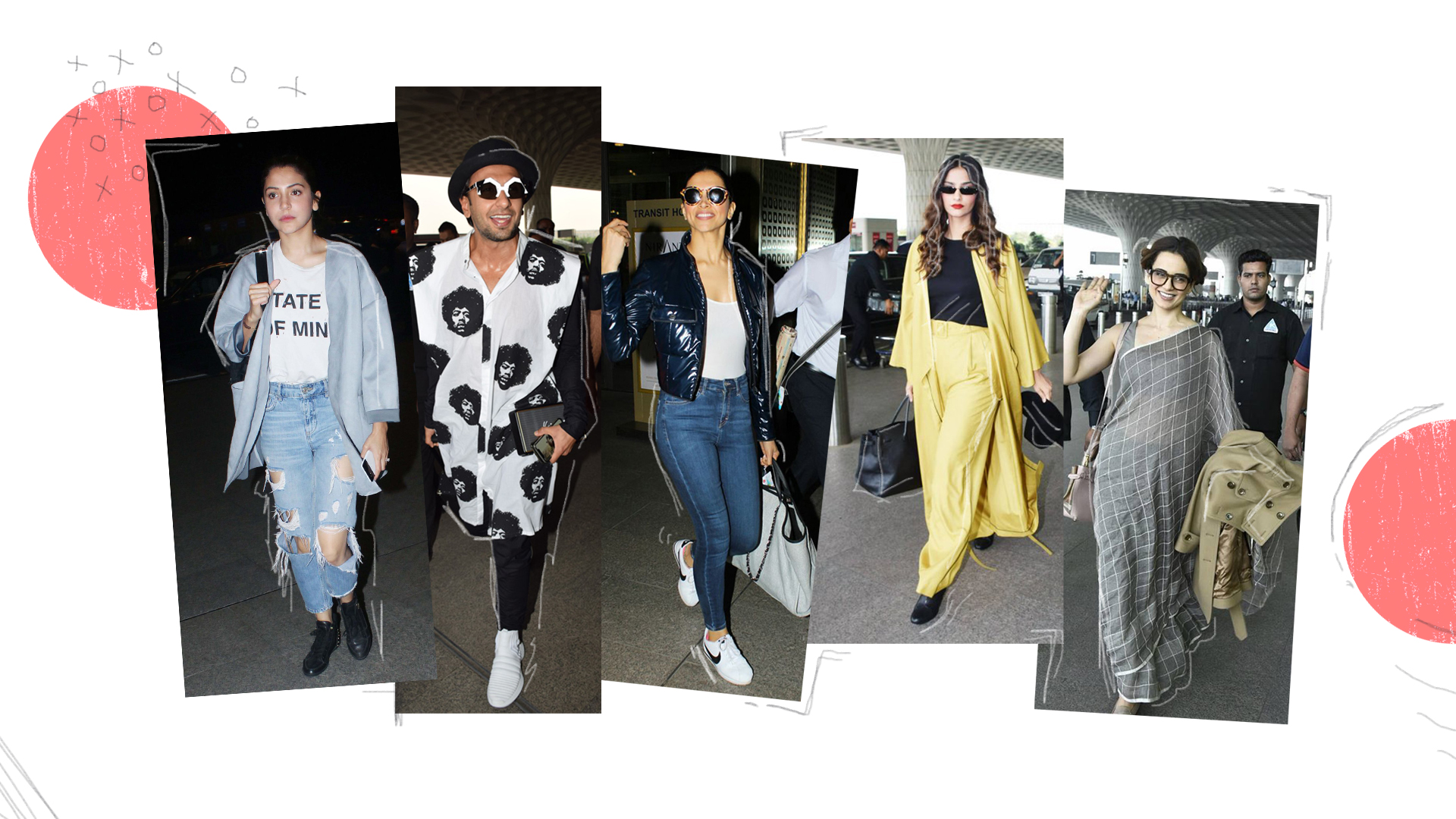
At what point did the multiplicity of voices in fashion become so streamlined that it got narrowed down to a singular dominating voice which we also very popularly known as trends?
While these ‘trends’ have allowed the avenue for people to come in contact to and get acquainted with the fashion industry, on and off ramps, it has also had a simultaneous adverse impact. Today, Page 3s and magazines have become the voice of these trends, sitting on a pedestal and declaring what our wardrobes ought to look like for SS and AW seasons. The oppressive burden of trends in fashion and the anonymity it imposes on individuals is, in the long run, essentially producing short-lived, day-long ‘looks’ wherein people are dressed like mannequins in the outlets of international brands or straight out of the ‘TRENDING RIGHT NOW’ page in fashion magazines.
For a specific dictated trend to have pertinence and find consumption, there must be an agency of some sort practicing a watch, isn’t it? In fact, there indeed are agencies, national as well as global, who practice a close watch on our sartorial behavior and preferences with every dress we buy and every accessory we take home from a store or purchase online. But, on a more basic level, we have the self-appointed “fashion police” who meticulously keep a watch on every second that passes on the fashion clock. Functioning much like the Big Brother, it has become a household name for anyone who is in the slightest contact with the industry that spews out these trends and surveils it.
Let us shift the conversation initiated by the fashion police around a certain outfit worn by a certain actor to the credibility of this forbidding crew to do so who is often obdurate in their opinion (read: ‘judgment’). Not only does the act of policing enable them to affect these celebrities’ fashion choices in some cases but also effectively brings them in contact with the behind-the-scenes reality of their supposed perfect lives. The aesthetics of fashion and the individual expression of its wearer is being reduced to the brand of a garment, how many times the actor has worn an outfit in the past, who else wore the same outfit, etc. So, in effect, are we becoming victims of a 1984-like all-pervasive monitor when it comes to expressing our sartorial voice?
But, we’re well aware that, thankfully, the collective mass is not the subject of this intense watch of the fashion police. So, who is it that the Indian fashion police are after?
When we talk about the fashion police, we are almost immediately reminded of Bollywood as the honest follower and devotee as well as the perpetuator of these “trends.” What we ought to question is how much of a willing party are these Bollywood actors when it comes to reciprocating to the severe and stern judgment of the fashion police? After all, it is not the actors’ primary job to be dressed in a Dior while going to a salon or even to a casual brunch; the unflinching gaze of the fashion police subjects the actors to maintain what has become a dual role, having been imposed with the responsibility of being all-time glamazons besides the role they are supposed to fulfill, i.e. acting. The fashion police of the present day wield so much power over its attentive audience that it has become unchallenging to ‘frame’ the actors and actresses as pawns of this form of policing.
In a conversation with celebrity photographer and a household name when it comes to the Indian paparazzi, Viral Bhayani shared his personal views on the subject saying, “earlier they could be themselves”, whereas now, “it has become crucial for them to be so perfect, especially when they are traveling.” His comments point to a pertinent trend in the country:
“If Ranveer Singh wears a certain designer’s outfit, it’s discussed. People say this is what I want my son to wear for a wedding. It is definitely an influence because the youth obviously likes to wear what the stars are wearing, they want to boast this is what the stars are wearing and this is what I am wearing.”
It won’t be erroneous to deduce that there is a certain extent of relatability that is established between the actors and their fans in their enthusiastic endeavor to dress and look like them, as Mr. Bhayani himself pointed out saying that “they want to relate themselves with them.” He added saying “now we spot a lot of common people dressed up so well. Sometimes I feel like taking their photos too!” This has led to an insurgence of the trend of the airport looks even outside Bollywood which has evidently had a significant influence “in the way they dress up”, to an extent that a number of brands have started endorsing ‘airport looks’ on hoardings, courtesy the influence of the ever-rising trend taking over social media every day. Will it be wrong to say that the thought of maintaining a certain look does not, consciously or subconsciously, pop up in our minds when we select what to wear to the airport while traveling?
It is, after all, the generous contribution of the media and the fashion police that has led to the rather rapid evolution of highly-curated viral-worthy red carpet looks, airport looks and now, even gym looks. If a pink doesn’t match its orange, if the heels are an inch shorter, or if a bag is too ‘last year’ than what the fashion police will allow, it is the actor who is brought under the obdurate judgments of the fashion police. In effect, the fashion police have given the ground for the influencer industry to place its roots wherein actors-good and bad- are expected to be flawless at both, so much so that it hardly allows any newcomer the time to navigate their way into coming to terms with their work and the functioning of the industry before which they are expected to stand up to the impossible standards of presentation set for them. Quoting my editor Charu Gaur here,
“Before the social media boom, there were good actors and bad actors, today there are good actors and the rest are, at the very least, “influencers.” As long as they are on the screen and have been smart enough to create a following, they’ll have brands interested in collaborating with them or dressing them.”
It is effectively a partial loss of opportunity for the actors to place their art on superior priority due to the pressure of being fashion icons from the get-go. Case in point, the emphasis on Janhvi Kapoor’s grooming for the red carpet as well as public appearances way before her first movie launched.
The impact of such intense policing on people’s individual sartorial choices is reflected in the peculiar ways in which people (in our case, actors) express themselves through the dress, earring, shoes they pick to wear for the day. The sartorial voice is being muffled by the one that overshadows creative ipseity in fashion, filling in the noise of all that the anonymous, faceless fashion police crew has to say. What better way to substantiate this fact than by pointing to the many replicas that now exist in the market which were famously worn by actors and actresses in a certain song in the movie or even a real wedding ceremony as if they carry the mark of approval by Bollywood and the fashion police.
In such a scenario, we believe it is of utmost significance to highlight the voices from within the industry which have gone on to express their nonalignment in the policing of fashion of and within the industry. In an interview during the launch of a makeup collection, Deepika Padukone, reacting to an interviewer, was quoted saying, “There will be days when you will like my dress, and there will be days when you won’t. But I am not dressing for you my love, I am dressing for myself. So, as long as I am having fun, nothing else matters.” But, have you wondered how many times a week our Instagram feed gets swathed by her airport looks, each looking a little more perfect than the other? In that, we are with Alia Bhatt in her amusement at “how every time you (Deepika) walk out of the airport and you are papped, there’s always like hair is flying and there is a joke… like someone has cracked a joke there’s a big laugh.”
On a similar vein and more recently, Kareena Kapoor Khan took a jab at “self-proclaimed Diet Sabyas” saying, “What I fail to understand is, why do people feel they are allowed to have an opinion in what anyone else wears?” on her show, What Women Want. These leading ladies from the Bollywood industry, considered the guru of fashion and its trends in the country, are quite evidently not very enthusiastic about styling every outfit they put on themselves or, to put it more directly, yield to the fashion police’s gaze and the agency it exercises. However, the fact they have the best stylists from the country (and abroad) in their team and arrange full-fledged photoshoots for every constructed look before stepping out, contradicts the famously-made statements.
It is also relevant to note how a systematic practice of gender bias works in this kind of policing, subjecting the actresses more than the actors. Actresses are inevitably expected to keep up to a prescribed set of aesthetics which is inconsiderate of their own a) readiness in participating in this supervision and b) sense of aesthetics. This makes us question whether an Iris Apfel or Anna Piaggi could have found wings under such all-pervasive policing in fashion.
The best way to break a system is to get to the roots of it and uproot it from its base. Actors like Sonam Kapoor, Kangana Ranaut, Anushka Sharma, Ranveer Singh, and others have daringly become the disruptors of this system by not only establishing their sartorial firm ground but also inspiring experiential fashion, proving that fashion lives a life longer than just a day, night, or even a month. It is an inherent part of a person’s mental evolution, and it is courtesy these actors’ unabashed insistence on the enactment of originality that the Indian mass, can recognize and acknowledge the avenue to find one’s voice in the plethora of opinions hurled at us.
The impact of social media on this system is also questionable. Is it helping us widen our perspectives or effectively narrowing them down? The whale of a reach that social media now has is permitting the fashion police an audience which consumes click-baits. Wielding the power of words from behind a veil of anonymity or through the direct/easy access to celebs they now enjoy, the fashion police are now far more extensive and broader in reach as well as capacity. What we must realize is that in expecting red carpet-level looks even to salon trips, we are not only essentially dehumanizing the actors to just ‘airport looks,’ ‘day looks,’ and ‘night looks’ but also shifting focus from their art to their wardrobes. The fashion police is now an ever-growing force that casts an overwhelming shadow on the way people perceive and consume fashion. Even though people nowadays put extensive effort in assembling the perfect outfit for every occasion and seek more access to the world of fashion, the restrictions of trends and policing tends to take away the true and pure self-expression that lies at the core of it all.
A literature lover and a fashion enthusiast, I dabble in fashion to merge my two loves. I get lost at grocery stores and find myself in shoe stores. When I’m not scrolling through Instagram, I like to live life out of a backpack and travel the country.

